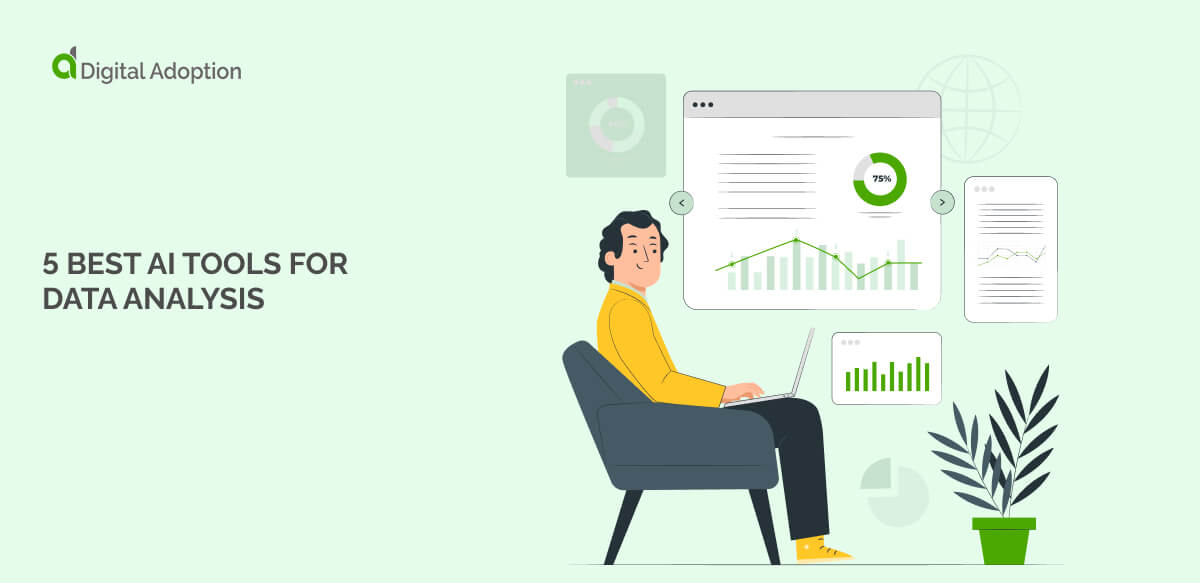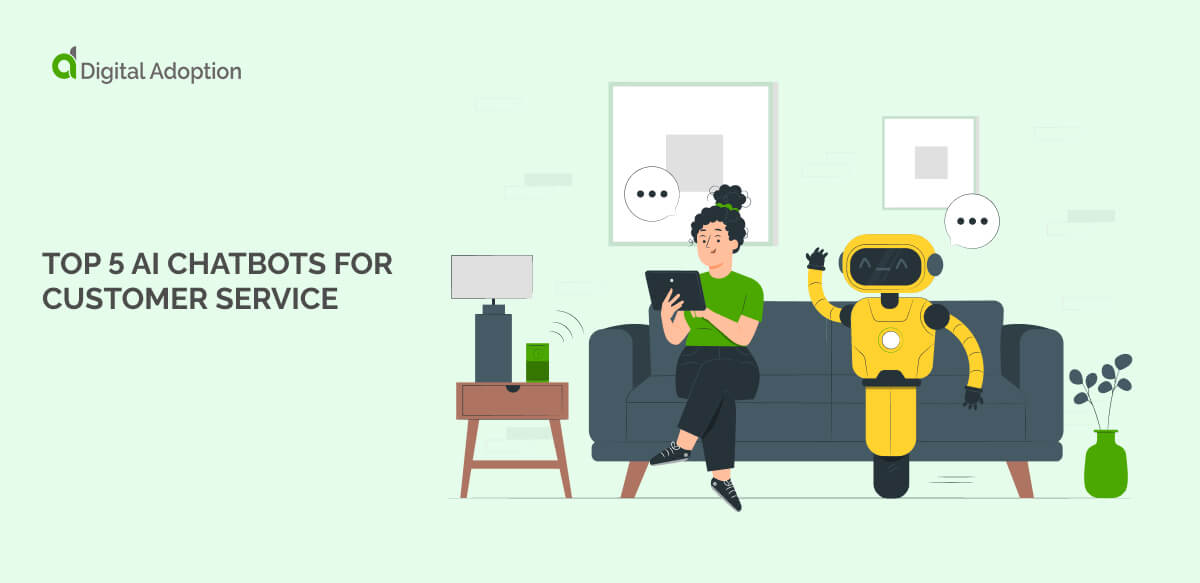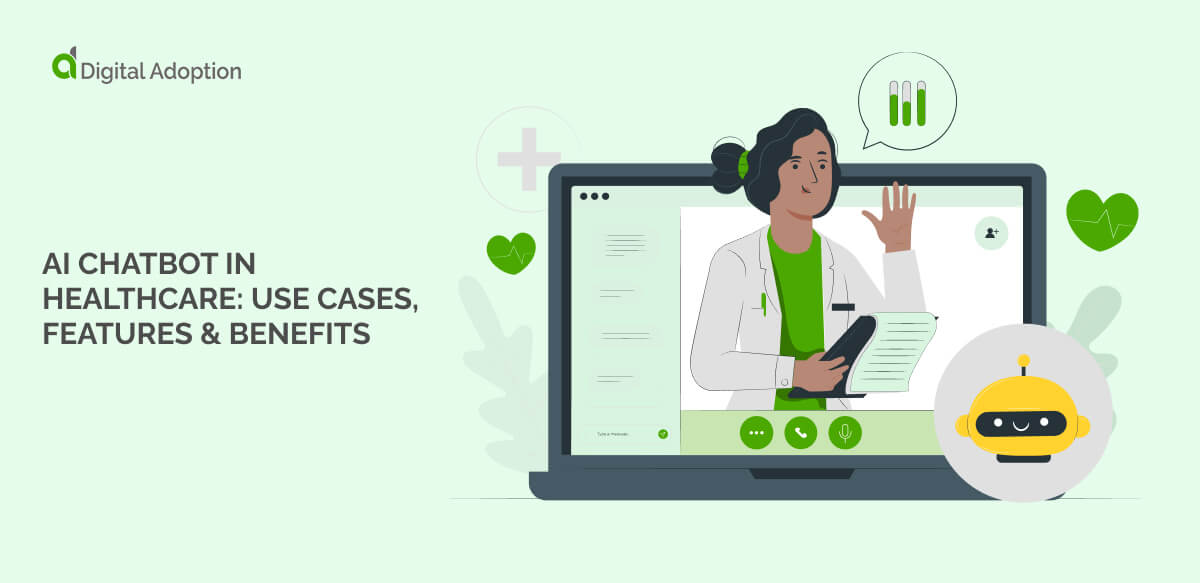Is your digital adoption strategy failing to yield the results you planned for? You might be lacking the right kind of leadership. Leading an organization’s digital adoption is no easy task. It takes determination, flexibility, and creativity. Digital adoption managers should embody all these traits.
Organizations fail in their digital adoption projects because they don’t assign digital adoption managers to oversee the process. Your existing management talent likey doesn’t have the necessary knowledge or experience to govern the process. You need a digital adoption manager with the right skills for the job. But what is a digital adoption manager?
This article will answer that question. We’ll explore the roles and responsibilities of a digital adoption manager and how the right leadership can take your strategy to the next level.
- What Is A Digital Adoption Manager?
- 5 Reasons To Employ A Digital Adoption Manager
- Responsibilities Of A Digital Adoption Manager
- How Digital Adoption Managers Hasten The Technology Adoption Process
- Six Technology Implementation Tips For Digital Adoption Managers To Ensure Lasting Success
- Digital Adoption Managers Understand People
What Is A Digital Adoption Manager?
Digital adoption managers oversee a company’s digital adoption strategy. They specialize in helping existing employees get the most out of digital tools.
Hiring the best digital adoption manager is part of a wider effort to support employees through digital change. Digital transformation requires a shift in attitudes to technology. The aim is to encourage a digital-friendly culture to make adoption more efficient in the future. As the needs of customers continue to evolve, this becomes more important.
Digital adoption managers are the key to engaging employees. They help a company overcome several challenges. These include:
- Training users on new systems
- Onboarding new hires
- Transitioning to digital business processes
- Achieving a return on technology investments
5 Reasons To Employ A Digital Adoption Manager
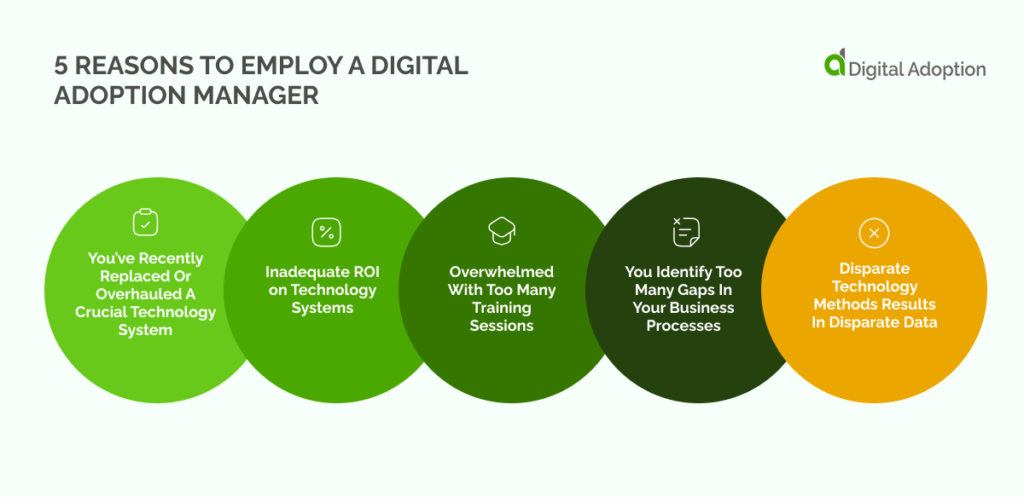
Organizations realize that they need to transform their business to thrive in the digital age. Statista shows that 62% of businesses prioritize operational efficiency initiatives after the pandemic. They achieve this through digital transformation.
Going through such drastic changes can be taxing on employees if they aren’t supported.
During complex change initiatives, employees look toward management for guidance. Team leaders must navigate their staff through the difficulties of adapting to new technology.
Employing a digital adoption manager to fulfill this role will make all the difference.
Here are five reasons to hire a digital adoption manager.
- You’ve Recently Replaced Or Overhauled A Crucial Technology System
Companies adopt new digital technology to improve existing company processes. Digital tools make business operations more efficient. This leads to increased revenue for the company.
Digital adoption managers drive adoption by focusing on the human component of integrating a new system. Overhauling a critical technology system can cause a lot of disruptions. Digital adoption leaders support employees through change. They drive engagement and streamline the adoption process.
- Inadequate ROI on Technology Systems
Are you failing to see a positive return on investment (ROI) on new integration projects? A common reason for poor ROIs is a lack of user engagement. You won’t see a positive ROI if employees and customers do not utilize digital assets’ full potential. Digital adoption leaders help to solve the issue of employee resistance.
Through change management, employees can adapt to new tools much faster.
- Overwhelmed With Too Many Training Sessions
Companies understand that proper training is essential to successful integration. But they often overwhelm employees with too many training sessions. Digital adoption managers specialize in effective teaching.
It’s important to remember that not everyone learns at the same pace. Employees respond better to customized and relevant training. Digital adoption managers can organize proper training based on the needs of learners. They can promote better strategies for onboarding new hires.
- You Identify Too Many Gaps In Your Business Processes
Have you noticed that some users are stuck in the past? Are areas of your company still using old software despite introducing new technologies? A new digital tool isn’t effective if users don’t embrace all its features.
A digital adoption manager can target these challenges and reduce these gaps in your business processes. They address weak points of workflow, identifying room to improve productivity.
- Disparate Technology Methods Results In Disparate Data
To ensure adoption is working, you’ll need to track the process. On a large scale, this can be difficult. Any disparities in data analytics can undermine the process.
When teams use system features differently across the company, data quality suffers. Digital adoption managers help connect teams across the company. They ensure that CIOs get the best insight from data analytics. This gives the company the ability to make adjustments to the process.
Responsibilities Of A Digital Adoption Manager
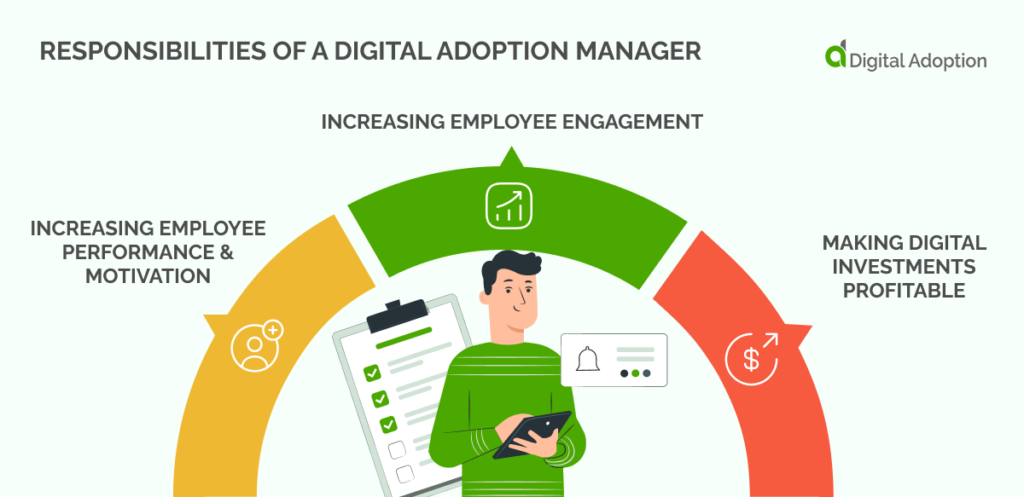
Organizations struggle to keep up with the evolving demands of the digital revolution. You need strong leadership to continue growing as a company in the digital world. That’s where digital adoption managers step in.
Here are some key responsibilities of a digital adoption manager:
Increasing Employee Performance & Motivation
Digital adoption managers should be tech-savvy, but they also need great interpersonal skills. To boost employee productivity, they must communicate digital technology’s full benefits. Digital transformation will make their jobs more efficient and rewarding.
Digital adoption managers monitor the process to manage any workflow disruptions. They ensure an organization can use digital technology to enhance operations across the board.
Increasing Employee Engagement
The key to a successful digital transformation strategy is user satisfaction. If users engage with new technologies, you’re on the right track. This includes customers too. A digital adoption leader’s responsibility is to ensure a high level of employee engagement.
Managers achieve this by implementing a comprehensive training program that anyone can use. Personalized training makes the learning process as easy as possible for tech-shy users.
Making Digital Investments Profitable
Finally, a digital adoption manager helps achieve positive returns on investments for a business. Once stakeholders invest in state-of-the-art tech, they’ll want to ensure a return. Essentially, digital adoption managers focus on maximizing the potential of digital technology to save time and money.
Companies dedicate a lot of time and money to finding the best digital technology possible. They understand that digital technology is critical to growing their business. Digital adoption managers ensure that going digital is worthwhile for the organization.
How Digital Adoption Managers Hasten The Technology Adoption Process

Organizations want digital adoption to be as quick as possible to gain an advantage over the competition. Rushing the process without the correct leadership in place is risky. Digital adoption managers can assist with planning a strategy. They focus on avoiding potential disruptions that could stall the digital adoption process.
A challenge many companies face when trying to hasten technology adoption is a lack of change management. They fail to provide the proper support for employees, leading to delays in the process.
For example, using a digital adoption platform. Digital adoption platforms are software that integrates with other technology. They guide users through key tasks and monitor the process. A digital adoption platform is a great way to manage projects on a large scale.
Six Technology Implementation Tips For Digital Adoption Managers To Ensure Lasting Success
- Retain The Right People
The first step to implementing technology is to assign the right talent to oversee the process. Your business should have a team who can manage the priorities of implementing new technology.
The digital adoption manager can allocate the right resources during the process. This means the company can take a holistic approach to transformation.
- Ensure A Seamless User Experience
User-friendly systems make digital adoption much easier. Unfortunately, digital technology isn’t always catered to the user experience. Training is the best way to minimize confusion or resistance to new technology.
- Focus On Relevance
Digital adoption managers pinpoint relevant areas of an organization. Throwing digital technology into the workplace without a plan is like throwing a dart blindfolded and hoping for a bullseye.
- Make Sure You Never Overlook Testing & Evaluation
Integration of new technology is a complex process. Many companies benefit from trialing new tools using pilot groups. They choose a group that reflects the range of users the new tech will impact. They test the rate of satisfaction of users to see if their strategy works the way it is or if adjustments need making.
- Verify The “How,” “When,” & “What” Of every Launch Process
Many companies mistake forgetting about technology once they reach the launch stage. Digital adoption is a continuous process, and you can’t afford to let your guard down.
Digital adoption managers should track the integration. They can then fine-tune the process to suit evolving needs of the business and its customers.
- Establish A Post-Go-Live Support Model
After launching new systems, create space to collect feedback. Employees will need someone to address their concerns over new software. Prepare a support model and explain to employees that help is there if they need it.
Digital Adoption Managers Understand People

The success of integrating new technology isn’t determined by a single person but by many people. The role of a digital adoption manager is to support the users of new software in getting the most out of the tool.
Employees need reassurance during change initiatives that someone has their back. Putting a face to leadership makes all the difference. A digital adoption manager acts as the bridge between human and technological components. They act as the glue between stakeholders’ ambitions and employees’ needs. Consider hiring a digital adoption manager to take your business to new heights.

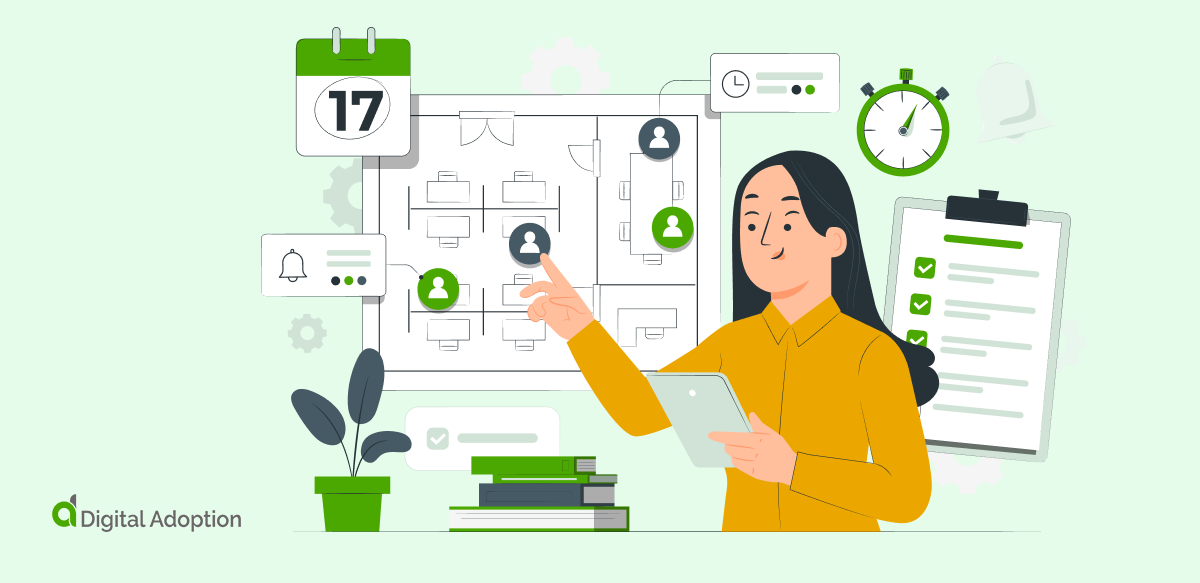





![4 Best AI Chatbots for eCommerce [2025]](https://www.digital-adoption.com/wp-content/uploads/2025/03/4-Best-AI-Chatbots-for-eCommerce-2025-img-300x146.jpg)



